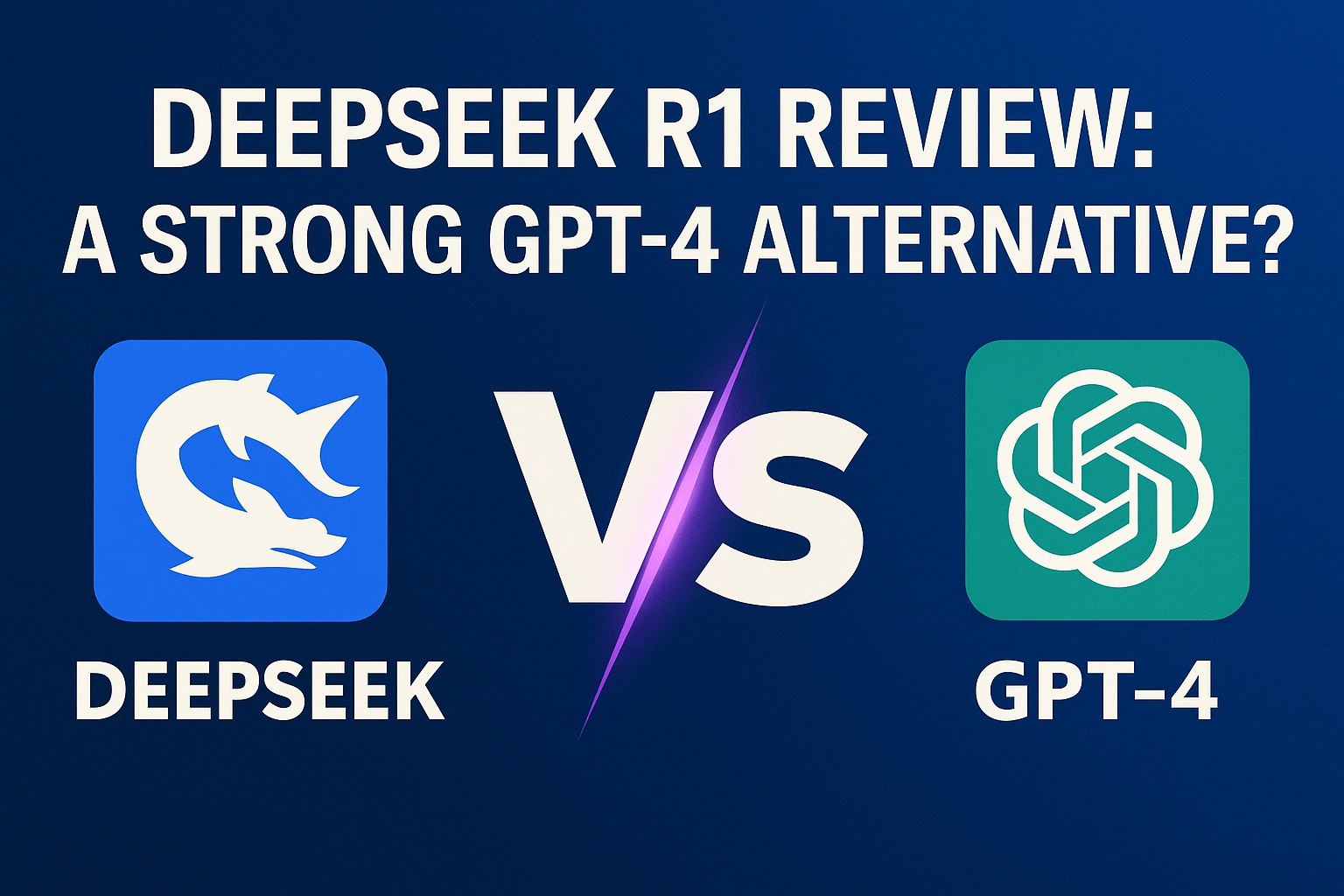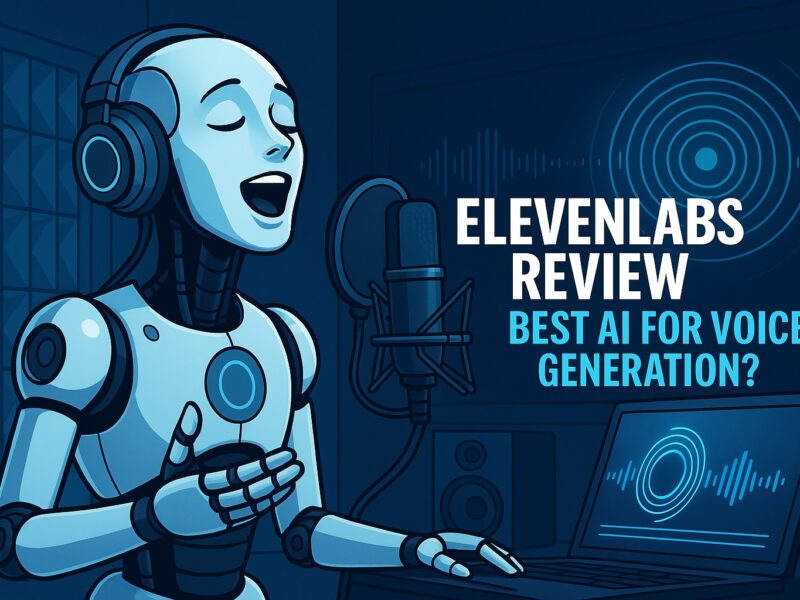DeepSeek R1 review discussions are heating up as this emerging language model aims to challenge giants like OpenAI’s GPT-4. With a focus on cost efficiency and strong multilingual capabilities, DeepSeek R1 is quickly gaining traction among developers, researchers, and businesses. But is it really a worthy alternative to GPT-4 in 2025? Let’s explore.
What Is DeepSeek R1?
DeepSeek R1 is a large language model developed by the Chinese AI company DeepSeek. Positioned as a high-performance, open-access alternative to GPT-4, it was trained using 2 trillion tokens and offers 128K context length support. Unlike many closed-source models, DeepSeek R1 is designed with transparency, scalability, and open deployment in mind, making it a strong option for developers who prioritize control and cost-effectiveness.
The release of DeepSeek R1 comes at a time when demand for customizable and affordable AI solutions is booming. Organizations want more autonomy, less vendor lock-in, and tools that can scale based on their infrastructure, not someone else’s API limits. DeepSeek R1 answers that call.
Key Features of DeepSeek R1
- 128K Context Window: Handles long documents and code with minimal loss of coherence.
- Open Weight Access: Developers can fine-tune and self-host DeepSeek R1 without licensing hurdles.
- Multilingual Strength: Offers strong performance in English, Chinese, and several European languages.
- Cost Efficiency: Designed to deliver high output quality with lower computational resources.
- Fast Inference: Competitive latency metrics make it suitable for real-time applications.
- Open-Source Friendly: Licensed under a permissive framework, enabling modification and redistribution.
DeepSeek R1 vs GPT-4: How Do They Compare?
One key question in any DeepSeek R1 review is whether it can match GPT-4’s capabilities. While GPT-4 maintains an edge in reasoning and creativity, DeepSeek R1 holds its own in technical and multilingual tasks. In benchmark tests, DeepSeek R1 scored impressively on MMLU and GSM8K while staying competitive in code generation and translation tasks.
- Better latency and throughput on smaller hardware
- More affordable API pricing or self-hosting options
- Superior support for context-heavy workflows like document Q&A
That said, GPT-4 still leads in open-ended dialogue, humor, and emotional tone recognition. DeepSeek R1 is more direct and fact-driven, making it better suited to structured content generation and information retrieval.
Use Cases for DeepSeek R1
DeepSeek R1 is finding adoption in several industries, thanks to its performance and open-access architecture. Common applications include:
- Enterprise Chatbots: Multilingual support and fast inference make it a natural fit for global customer support.
- Code Assistants: Strong performance in Python, C++, and JavaScript code completion and debugging.
- Document Processing: Used for summarizing, translating, or extracting key points from lengthy legal or academic documents.
- Education: Assists students with homework help and language translation in real time.
- Internal Knowledge Bases: Automates Q&A on corporate documents and internal wikis.
Performance Metrics and Benchmarks
In recent benchmark comparisons, DeepSeek R1 performed within 10–20% of GPT-4 on most academic and industrial benchmarks. It scored particularly well on:
- MMLU: 74.3 (GPT-4: 86.4)
- GSM8K: 67.1 (GPT-4: 83.2)
- HumanEval (code): 53.5 (GPT-4: 67.0)
These numbers suggest that DeepSeek R1 is a serious contender—especially when you consider the freedom of self-hosting and lower operating costs.
Privacy and Customization Benefits
One standout advantage noted in every in-depth DeepSeek R1 review is its flexibility. Since the model weights are available for download and fine-tuning, organizations can deploy R1 in private environments, enabling better compliance with regional privacy laws and internal data policies.
Moreover, self-hosting DeepSeek R1 enables users to optimize the model for specific workflows—whether that’s legal document parsing, compliance monitoring, or healthcare chatbot deployment. Custom training on company data further enhances output relevance.
Limitations to Consider
- No Native API from DeepSeek: Most users need to rely on third-party interfaces or set up infrastructure themselves.
- Weaker in Casual Language: Less effective in conversational or emotionally nuanced interactions.
- Limited Ecosystem: Fewer integrations and tools compared to GPT-4 or Claude-based environments.
- Setup Complexity: Requires technical skills to fine-tune or deploy securely at scale.
Still, for organizations with engineering capabilities, these limitations are minor compared to the strategic control and cost benefits R1 offers.
Who Should Use DeepSeek R1?
Developers, AI researchers, and organizations with technical teams are best positioned to leverage DeepSeek R1. It’s particularly useful for:
- Teams needing fine-tuned control over model behavior and deployment
- Companies operating in multilingual regions
- Projects where budget and infrastructure control are a priority
- AI startups building their own stack without API restrictions
Deployment Options and Community Support
DeepSeek R1 is available via Hugging Face and GitHub, and early adopters have already released community fine-tunes for tasks like summarization and code explanation. Docker containers and inference scripts are provided to simplify the setup process.
There’s an active Discord and GitHub Issues page for troubleshooting and collaboration. While the ecosystem is still growing, it’s gaining momentum among open-source AI communities that previously relied on LLaMA or Falcon models.
Final Verdict: Is DeepSeek R1 Worth It?
This DeepSeek R1 review finds that it’s a compelling GPT-4 alternative, especially for users who value transparency, customization, and cost control. While it lacks the polish and ecosystem maturity of OpenAI, DeepSeek R1 punches well above its weight in structured tasks and technical use cases.
If your priorities include open access, multilingual processing, and strong document comprehension, then DeepSeek R1 is absolutely worth considering in 2025. With its solid performance benchmarks, flexible licensing, and expanding user community, it stands out as one of the most promising large language models outside the commercial AI mainstream.


